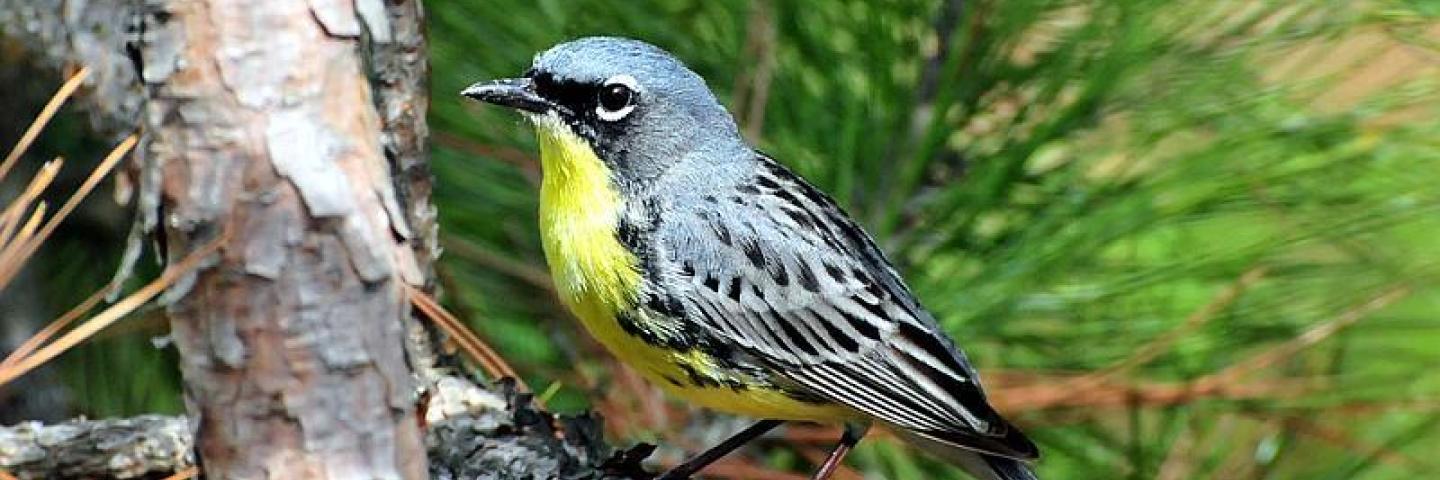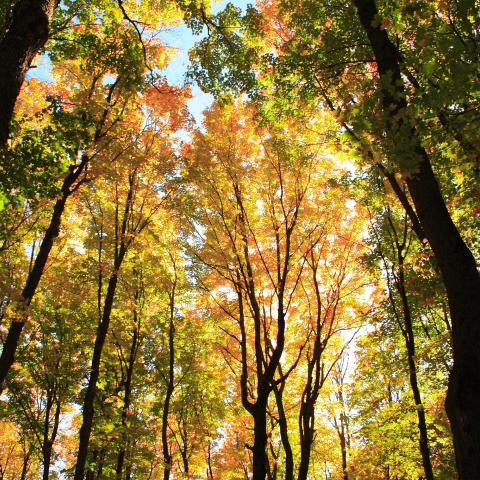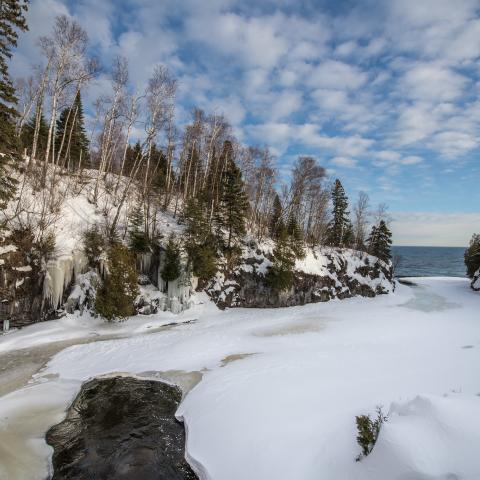Vermont Landowners Create Oasis for Birds with Forest Management

Annette and Jeff Goyne live in Richford, Vermont, surrounded by the beauty and tranquility of 54 acres nestled in the foothills of the Horseshoe Range. They have worked hard to cultivate a birder’s retreat and wildlife haven from what once was a 200-acre dairy and sugar bush.
Their primary goal is to ensure a healthy ecosystem, especially for species of concern, such as migratory songbirds. Their home sits atop a 10-acre hill and “On a clear day, we can see the Adirondacks,” says Annette.
Today, their land is primarily forested and over the span of 35 years, the Goynes partnered with several local, state and federal conservation entities to achieve their conservation goals.
“I have known this land for a long time, and it becomes a part of you,” explained Jeff. “I knew this land when it was a working small upland farm. I liked it then. I love it now.”
The habitat-focused conservation work was implemented through Farm Bill programs including Regional Conservation Partnership Program (RCPP), which promotes coordination between conservation partners and private landowners to conserve natural resources on private lands. Under the 2014 Farm Bill, the Goynes participated in the Cold Hollow to Canada (CHC) Woodlots Program which was expanded under RCPP and added 50 landowners and 8,000 acres in Richford and Montgomery. This RCPP effort encouraged Vermont’s private forestland owners to manage wildlife habitat and develop ways to help forests adapt to changing conditions.
“Annette and Jeff have a piece of property on which they maximized the habitat and production value,” said Carissa Stein, a Soil Conservationist with NRCS. “I see folks all the time that want to reach their level of conservation. They can look out their door and be at peace with what’s around them.”
The forest and wildlife habitat approach at the Goynes’ property included patch cuts, mast tree release (black cherry and yellow birch), early successional habitat development and brush hogging.
“We have different habitats on our land and working with NRCS and the CHC Woodlots Program allowed us to enhance this,” explained Annette.
As birders and animal lovers, conservation is important to them because it offers the chance to see varying species of animals, birds, and plants, and “enjoy the botany of our land,” she said.
Read More Success Stories
RCPP in Action
RCPP projects are making an impact across the country. Read about some of the program's successes below.
Learn More



